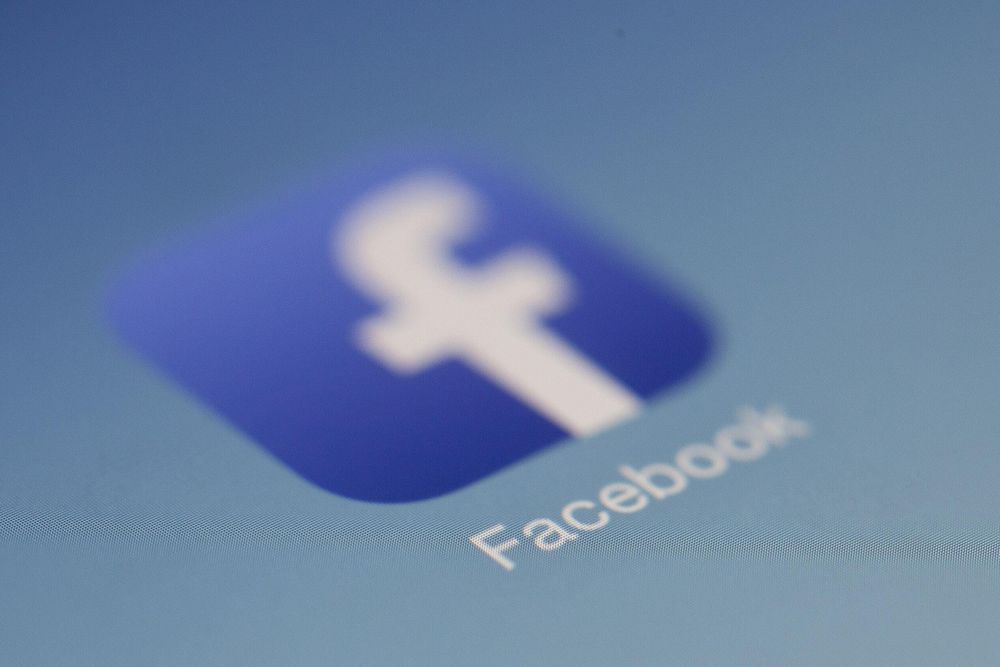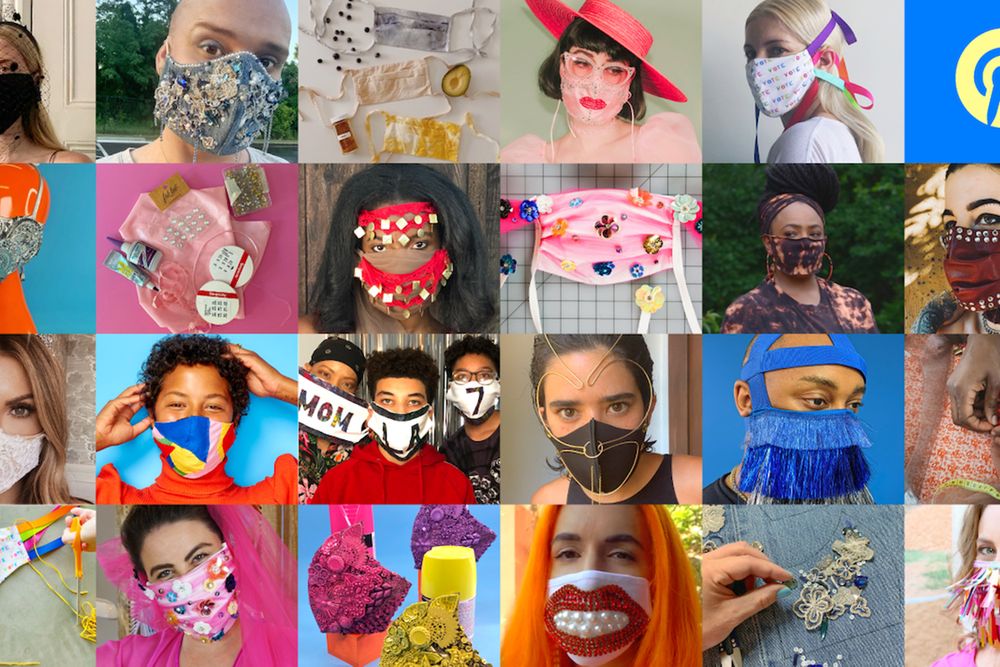|
Happy Friday. We realized we might be a bit washed up because we’re learning about new artists from their McDonald’s collabs. So we’ll be spending our weekend doing a deep dive on Saweetie.
In today’s edition:
- Moving billboards
- Facebook’s metaverse
- Masks in marketing
—Ryan Barwick and Minda Smiley
|
|
|
Carvertise
|
While going back to the office has gotten a mixed response, few miss the commute. But brands miss inserting themselves into our rush hour, plastering their ads on subways, highways, or in Times Square, in hopes of capturing those barely opened eyeballs.
Over the last decade, companies like Uber and Lyft have made it easier for brands to advertise outside. How? By running ads on top of their rideshare cars via digital screens. Placing ads on cars isn’t entirely new, but it’s a reawakened industry that’s gaining steam as Covid-19 lockdowns ease . .
Big dogs: Uber and Lyft each has its own OOH business; they both inked deals with inventory owners in 2020. While Uber sells inventory atop its own fleet, it also recently signed an agreement for access to 3,500 New York City taxis. So far, its active inventory is made up of 2,205 screens running in Atlanta, Dallas, Phoenix, Los Angeles, Boston, and New York. Next week, it’ll add Chicago to the mix.
-
Nationwide, Uber OOH is aiming for one billion impressions a month by September, which will be tracked by mobile location data.
Crosstown advertisements
Uber and Lyft aren’t the only players. Adway, founded in 2018, makes a projector that displays OOH ads on the side of a car, unlike the “toppers” used by the ridesharing companies.
- It’s testing at least 20 vehicles in Santa Monica, California, measuring impressions based on mobile Bluetooth signals from other drivers and pedestrians. Clients so far include Sweetfin, Rip Curl, and Cisco Webex.
- Rideshare drivers are “low-hanging fruit,” since there are already more than a million scattered across the US, Sasha Krylov, CEO of Adway, told Marketing Brew.
- “It’s easy to attract someone with an opportunity to make money doing virtually nothing,” he noted, especially without the “embarrassment factor” of a cosmetic change to a vehicle, like the toppers. With projectors, drivers can easily turn the ads off. Drivers using Adway make roughly $150/month, driving about 25 times per month in the evening (that’s when the projectors work best).
Another startup, Carvertise, wraps vehicles—mostly rideshares—in vinyl decals. Started in 2012, Carvertise has signed up more than 500,000 drivers nationwide, but only about 2,000 are on the road right now. With Carvertise, drivers earn about $150 to $250 per month, with opportunities for incentives, like driving past events such as tailgates for more cash.
The problem? Finding clients who think it’ll work. “We have a ton of drivers; it’s just about finding advertiser demand in specific markets...the hard part is making it sustainable to sell,” Greg Star, cofounder of Carvertise, told Marketing Brew.
And yet: That doesn’t mean brands aren’t interested. Adway received $6 million in seed funding this month, and Carvertise has already hit its yearly revenue goal of $5 million, having signed clients like Netflix, Wawa, and Valvoline. According to Star, advertisers that might have held off in the pandemic are taking advantage of a return to normalcy and pent-up demand.
Click here to read the full story.—RB
|
|
|
Pexels
|
No, this newsletter isn’t coming to you from the “metaverse,” but maybe it will once we figure out what that means in the first place. Of course, we’re talking about the universe Facebook CEO Mark Zuckerberg hopes to develop, aka his vision for the future of the company.
Speaking to investors during Facebook’s Q2 earnings call on Wednesday, Zuckerberg detailed his definition of the metaverse, describing it as “a virtual environment” and “embodied internet that you're inside of rather than just looking at.” It’s “one of the most exciting” projects “in our lifetime,” he said.
More from its earnings:
-
Facebook said it made $29.1 billion in revenue this quarter, making it the latest tech company to benefit from rises in digital ad spend.
-
But hold on: CFO Dave Wehner said the company expects to see “increasing ad targeting headwinds in 2021 from regulatory and platform changes,” specifically from Apple and its recent iOS update, which allows iPhone users to stop apps from tracking them for advertising purposes.
+1: Earnings aside, Facebook also made news this week by announcing it would block advertisers from targeting users under 18 “based on their interests or on their activities on other websites and apps.” But advertisers will still be able to reach them based on their age, gender, and location. The change applies to Facebook, Instagram, and Messenger.—RB
|
|
SPONSORED BY MORNING CONSULT
|
|
You’ve probably experienced this before: inflexible approaches to brand and reputation tracking that lead to misinterpretation and miscommunication. Which then leads to clients who are forced to fit within tight timelines and narrow parameters.
Which, ultimately, leads to annoyed clients.
Knowing all this, Morning Consult did something very important. They asked, “Why is it like this, you ding-a-lings?”
And voila, they created a tracking program that is unique to your needs and flexible enough to adjust when you need it.
So it’s no shock to learn that industry leaders and head honchos rely on Morning Consult’s proprietary tech and analysis to give them competitive advantages in real time.
Don’t look back on old tracking programs. Let Morning Consult show you a bright future with tracking tech that fits your needs.
Track them down here.
|
|
|
Pinterest
|
Over the past year and change, many brands have shown masks in their advertising, and some—like Ford and Pinterest—have encouraged mask-wearing.
Of course, once vaccines arrived and mask mandates softened in the US, marketers started to ease up on showing masks, opting for more aspirational messaging instead. But as the CDC changed course this week, saying even vaccinated people should wear masks indoors in some parts of the country—and companies like Apple and Citigroup require vaccinated staffers to wear them—will advertisers start incorporating face coverings into their ads again?
The short answer: probably not. “The freedom from masking feels great, so except for certain industries like health care, education, restaurants, and other service industries, it doesn't seem likely that consumers will expect to see people wearing masks in ads,” Mike Caguin, CCO of creative agency Colle McVoy, told Marketing Brew. “I don’t think the majority of consumers will have a negative impression of a brand if they see or don’t see masks in ads.”
Abby Hill, director of strategy at creative agency Dagger, told us that a return to “‘normal’ life is not as near as many had hoped, but this understanding brings with it a new desire among consumers for escapism. Consumers aspire to live in a world in which masks are no longer needed, with content and the advertising that lives alongside it playing a role in depicting that world.”—MS
|
|
-
Amazon saw a 27% YoY increase in Q2 sales, up $113+ billion.
-
MyPillow is pulling its ads from Fox News. According to The Wall Street Journal, MyPillow CEO Mike Lindell made the decision after the network declined to run an ad promoting an event claiming election fraud.
-
NBC announced that Peacock has 20 million active users, up from 14 million at the end of March.
-
Ron Popeil, the infomercial king, died on Wednesday. He was best known for his trademarks like “But wait, there’s more!” and “Set it and forget it.”
|
|
|
|
Time for a little ROI arithmetic. Relax, it’s eeaassyy. With dotdigital’s ROI calculator, you can make sense of the revenue generated by your email marketing campaigns. Discover which email campaigns generate the most revenue, then optimize the ones that are underperforming. Learn how to improve your company’s conversion rates and ROI here.
|
|
|
Francis Scialabba
|
There are a lot of bad marketing tips out there. These aren't those.
Pinterest: You know how to save recipes that you’ll never make on Pinterest. But do you know how to use the platform for business? If not, these eight strategies can help.
B2B: They say life’s all about balance. So is marketing, apparently. This LinkedIn guide explains why B2B marketers should strike a balance between brand building and demand generation.
Hashtags: Everything you need to know about Instagram hashtags for brands, here.
Red alert: There’s an easy way to reach podcast listeners. RedCircle lets you target the right demographics and measure the right metrics across thousands of independent shows, all with just a few clicks. Learn how to plug and play your brand here.*
*This is sponsored advertising content
|
|
|
Catch up on a few Marketing Brew stories you might have missed.
|
|
AD TECH COMPANY OR PHISH SONG
|
|
There are a lot of questionably named companies in the murky marketing universe. So here’s a game: Two of these companies are real ad tech companies. Three are songs from Phish, which kicked off its tour this week. Can you find them? Keep scrolling for answers.
-
Carini
-
Moosend
-
Moma
-
Tube
-
Kontentino
|
|
AD TECH COMPANY OR PHISH SONG ANSWERS
|
|
Although they are the gods of cow funk, the Vermont jam band is not responsible for Moosend. Or Kontentino.
|
|
|
Written by
Minda Smiley and Ryan Barwick
Illustrations & graphics by
Francis Scialabba
Was this email forwarded to you? Sign up here.
|
ADVERTISE // CAREERS // SHOP // FAQ
Update your email preferences or unsubscribe here.
View our privacy policy here.
Copyright © 2021 Morning Brew. All rights reserved.
22 W 19th St, 8th Floor, New York, NY 10011
|
|











